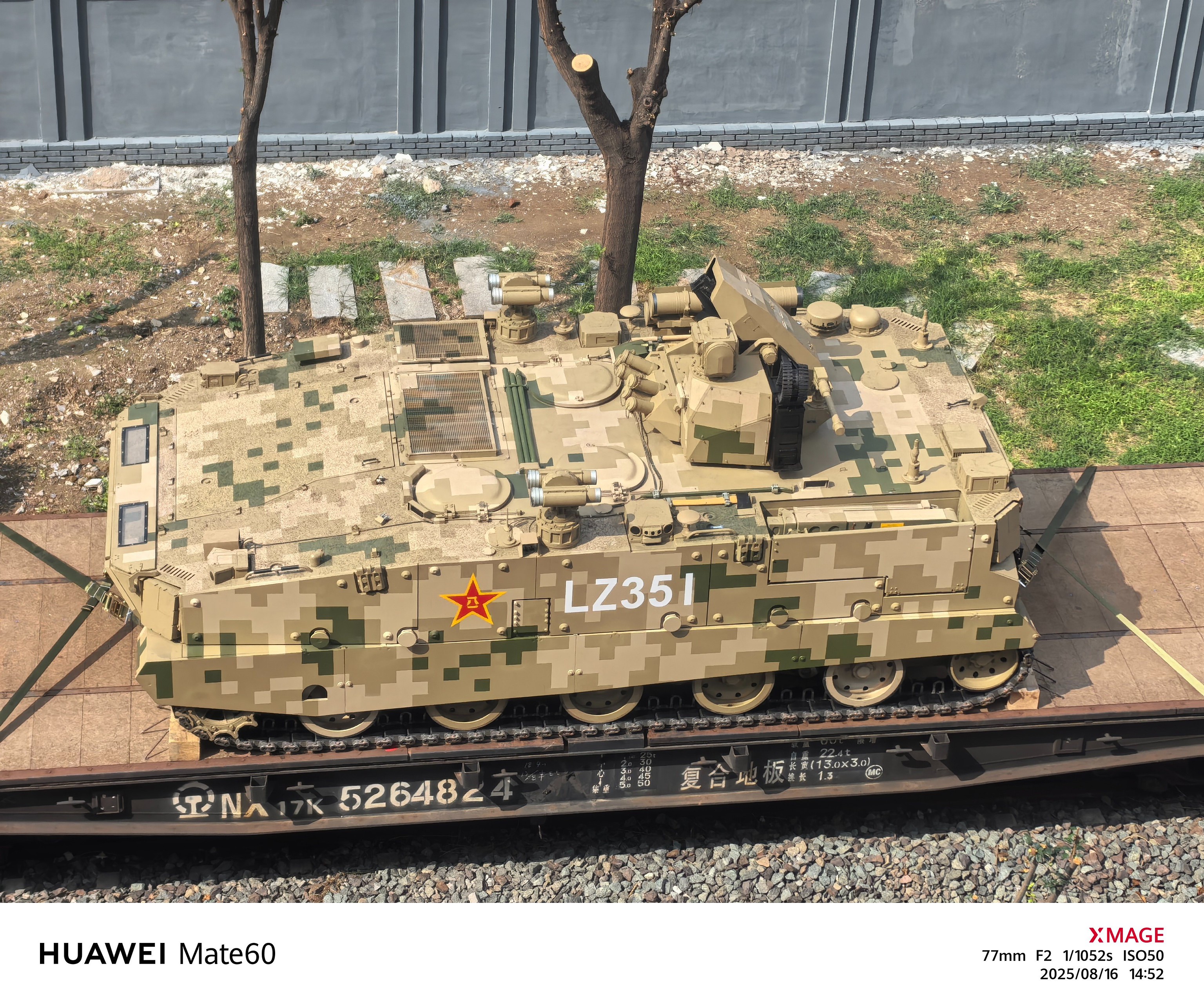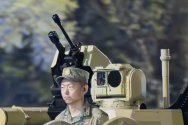It could be the second reason you presented. But it also looks like it's simply just not installed on the drone? But I can't really see why they'd separate it for now just to simply screw it on later. I always thought that for drones launched from vehicles, they'd use those cylindrical coaxial drones we've seen, like the one from VT-4, as they seem to get the job done and are more compact.View attachment 158547
Double checked, the Camera unit (red) is not hard-connected to the drone fuselage (blue), but rather attached to the landing gear (green) via a tether system (yellow).
View attachment 158549
I'm genuinely curious about the reasoning behind this. Is it because the airframe vibrations during flight would interfere with the camera's operation? Or is this some kind of off-the-shelf product modified for temporary use?
Any thought?
You are using an out of date browser. It may not display this or other websites correctly.
You should upgrade or use an alternative browser.
You should upgrade or use an alternative browser.
Chinese infantry fighting vehicles
- Thread starter Broccoli
- Start date
Most if not all coaxial guns have vertical movement this on looks like it can go up or down independently from the main cannon or just a longer barrelIt is interesting the coaxial MG is now able to have vertical movement.
Last edited:
There seems to be more space around the coaxial than other designs.Most if not all coaxial guns have vertical movement
For the different IFV variants I noticed there are hatches close to the APS launcher units, so maybe it can be replenished during lull in action. For the tank it is probably not convenient/safely enough for crew to venture out further from their compartments to replace the spent munitions, hence the tank has 2x4 while the other vehicles have 2x2.
The PLAAF already has a network centric operation mode in terms of interconnected radar assets that share info. I wonder if the same can be applied to the ground vehicle's lidars and millimeter wave radar of the APS units, meaning that the radar are not only for self protection duty but actively scans the environment the convoy is in. The commander can see the result of not only his own scans. but that of the other vehicles too, and relay them to other vehicles, or even the higher command can see overall picture formed by these networked sensors.
While the same can also be made of the CITV it's probably better not to interfere with the commander's own use of the system, but millimeter wave electronically scanned arrays are much more flexible in regards to share/networked use.
The PLAAF already has a network centric operation mode in terms of interconnected radar assets that share info. I wonder if the same can be applied to the ground vehicle's lidars and millimeter wave radar of the APS units, meaning that the radar are not only for self protection duty but actively scans the environment the convoy is in. The commander can see the result of not only his own scans. but that of the other vehicles too, and relay them to other vehicles, or even the higher command can see overall picture formed by these networked sensors.
While the same can also be made of the CITV it's probably better not to interfere with the commander's own use of the system, but millimeter wave electronically scanned arrays are much more flexible in regards to share/networked use.
Y
yes you are right. This is clearly going up a level in network centric warfare for the army.For the different IFV variants I noticed there are hatches close to the APS launcher units, so maybe it can be replenished during lull in action. For the tank it is probably not convenient/safely enough for crew to venture out further from their compartments to replace the spent munitions, hence the tank has 2x4 while the other vehicles have 2x2.
The PLAAF already has a network centric operation mode in terms of interconnected radar assets that share info. I wonder if the same can be applied to the ground vehicle's lidars and millimeter wave radar of the APS units, meaning that the radar are not only for self protection duty but actively scans the environment the convoy is in. The commander can see the result of not only his own scans. but that of the other vehicles too, and relay them to other vehicles, or even the higher command can see overall picture formed by these networked sensors.
While the same can also be made of the CITV it's probably better not to interfere with the commander's own use of the system, but millimeter wave electronically scanned arrays are much more flexible in regards to share/networked use.
And I think the millimeter wave radars can even be used to transmit/relay info to units within LOS, acting as data-link/communication channel themselves. They put in an expensive piece of radar, might as well make it useful in more than one ways.Y
yes you are right. This is clearly going up a level in network centric warfare for the army.





